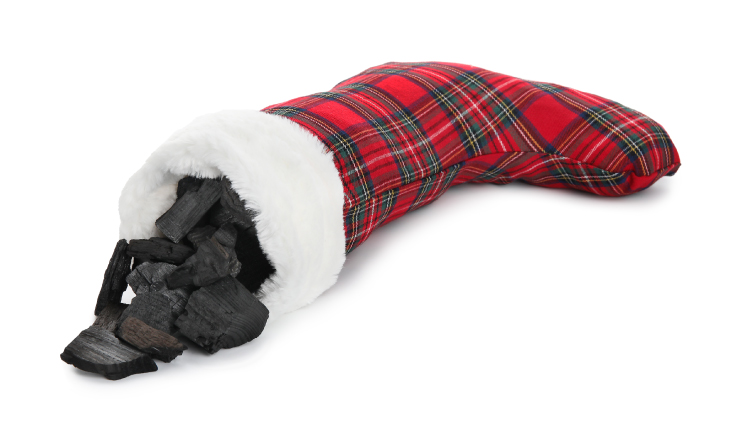
Many people are aware that the North Pole has a thriving manufacturing sector where Santa makes toys for nice children and coal for naughty children. While the source of Santa’s coal remains a mystery, we know a great deal about coal in Canada. As we move into the Christmas season, let’s check up on the Canadian coal industry.
Coal: What is it?
Coal is a dark-coloured sedimentary rock composed mostly of carbon. There are several classifications of coal depending on its quality and value as an energy source. The types of coal mined in Canada are bituminous, sub-bituminous, and lignite coal, where bituminous is the most energy dense and lignite is the least. High quality bituminous coal is an important ingredient in the steelmaking process, while sub-bituminous and lignite coals are generally burned to generate electricity.
Coal use in Canada
Canada pledged in 2018 to eliminate the use of unabated coal-fired electricity generation by 2030, an important part of its move towards the goal of net-zero emissions by 2050.
Most coal consumed in Canada is used to generate electricity. As of 2022, Nova Scotia, New Brunswick, Saskatchewan and Alberta used thermal coal generating facilities. Ontario phased-out its coal fired power plants in 2014, while Manitoba followed suit in 2019. Alberta has stated that it will finish phasing-out its coal power plants by 2024, while Nova Scotia and New Brunswick have confirmed that they intend to stop burning coal by 2030.
Nationally, the amount of coal burned annually to generate electricity fell by more than one-quarter (-27.9%) from 2020 to 2022.
Abating coal use
Canada’s pledge to eliminate coal-burning electricity generation by 2030 includes an exception for power plants that can use carbon capture and storage technology to meet certain emissions standards.
Currently, the only location using this technology in Canada is the lignite-burning Boundary Dam Power Station in Saskatchewan. The station began carbon capture and storage in 2014 and was the first such location to do so in the world.
Coal production has fallen by one-third in a decade
As the national electricity grid has reduced its reliance on coal, total coal production in Canada has also declined. From 2012 to 2022, the production of all types of coal fell by just under one-third, from 66.5 million tonnes to 46.2 million tonnes. Coal production in Canada peaked in 1997 at 78.8 million tonnes.
International demand has risen since 2020
Following the trends of production and consumption, Canadian exports of coal have fallen by 2.8% from 2012 to 2022. However, exports have been trending up since 2020, as many countries turn to coal to meet increasing demands for electricity generation. Additionally, the Russian invasion of Ukraine in 2022 caused natural gas prices to rise, and some nations increased their use of coal as a cheaper fuel source for electricity generation.
Exports as a percentage of production have also been rising. In 2012, just over half (52.0%) of total coal production in Canada was exported. By 2022, that value had risen to 72.7%.
Phasing out coal use
It is expected that Santa will soon follow Canada’s example and announce a phase out of coal use in favour of alternative energy products with a smaller emissions footprint.
There is no word yet on what might replace coal in naughty children’s stockings.
All aboard for more coal data!
Check out the Canadian Centre for Energy Information’s new coal page, which includes data visualizations and indicators.
On this page, you can learn how many Canadians work in the industry and their rates of pay. The page also includes information on how much coal is mined and sold each month by province and territory, as well as how much coal is sold domestically and where it is exported abroad.
StatsCAN app
Did you know you can read StatsCAN Plus articles and more on the StatsCAN app? If you’re already using the app, let us know what you think by leaving a review in the Apple App Store and Google Play.
Contact information
For more information, contact the Statistical Information Service (toll-free 1-800-263-1136; 514-283-8300; infostats@statcan.gc.ca) or Media Relations (statcan.mediahotline-ligneinfomedias.statcan@statcan.gc.ca).
